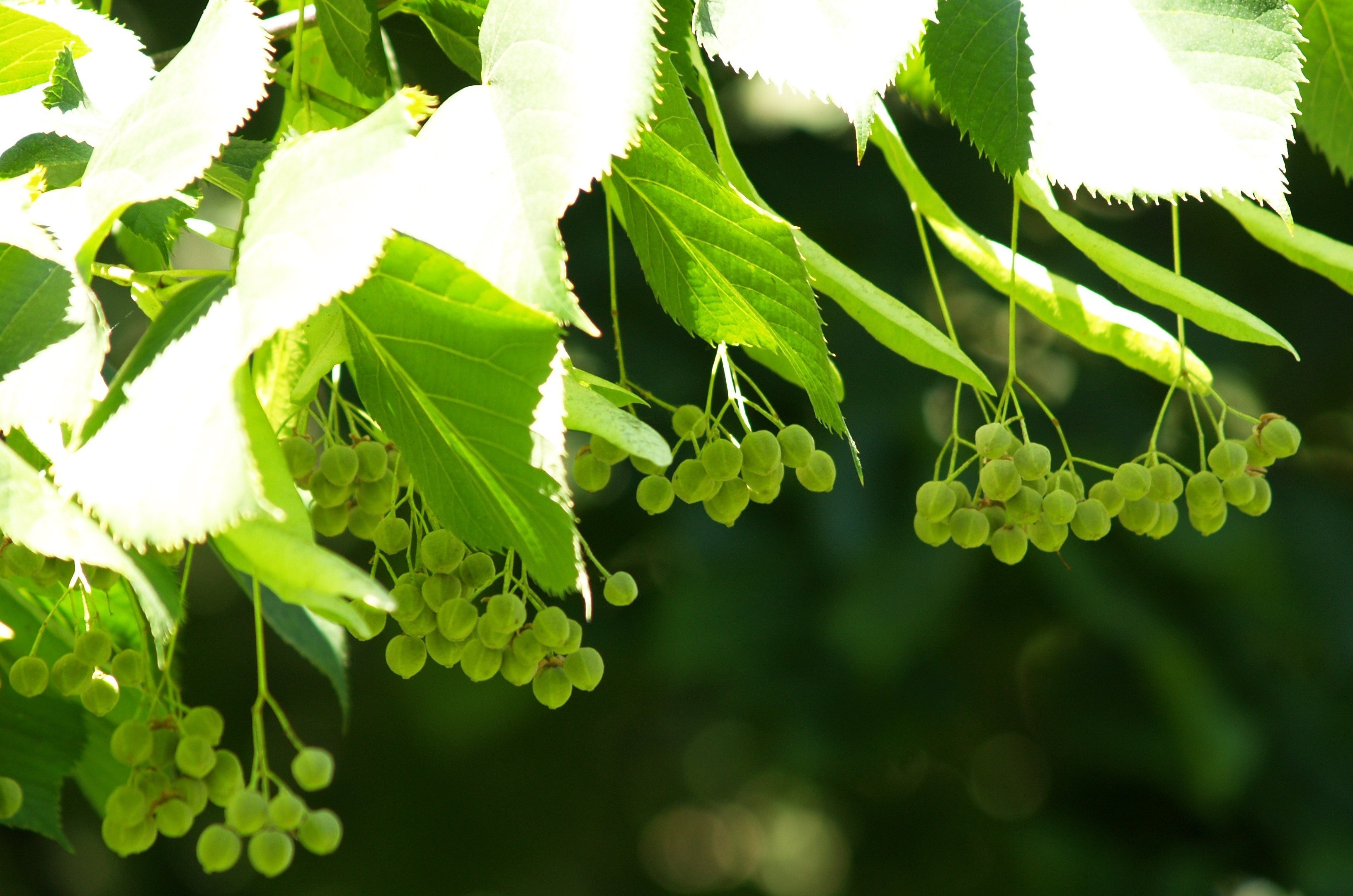
Small-leaved Lime
Tilia cordata
Family and description
Initially belonging to the Tiliaceae family, it was later incorporated into the Malvaceae family.
It is a deciduous tree, growing up to a height of 30m.
Its bark is gray, very smooth in young specimens, becoming darker and cracked with age. The canopy is rounded.
It has alternate asymmetric leaves of cordate shape (as its Latin name indicates) and serrated margins.
The flower clusters have a variable number of whitish hermaphrodite flowers with a leafy yellow-green subtending bract. They appear in early summer and produce a sweet scent.
The fruit, round to oval, is smooth and dry, with 2 to 3 seeds. The bract acts as a wing, facilitating the dispersion of the seeds by the wind.
Origin and habitat
Of European origin, it is not an autochthonous tree in Portugal but is frequently used in gardens.
This tree is typical of riverside forests, beech and alder-tree oak forests.
This species is very demanding in water, not tolerating high summer temperatures or intense cold. It can inhabit both limestone and silica soils, provided they are very fertile.
Uses and curiosities
The small-leaved lime is considered a species of great longevity, with trees known to be existing for more than 500 years.
The wood of these species is soft and easy to work, often used in the middle ages for retables. Due to its acoustic properties it is used in specific components of some musical instruments.
Much appreciated also by bees, its flowers are used to make infusions. Its active ingredients include flavonoids, with antioxidant, sedative, antispasmodic and anti-inflammatory properties, and volatile oils. The plant also has tannins, with astringent properties.